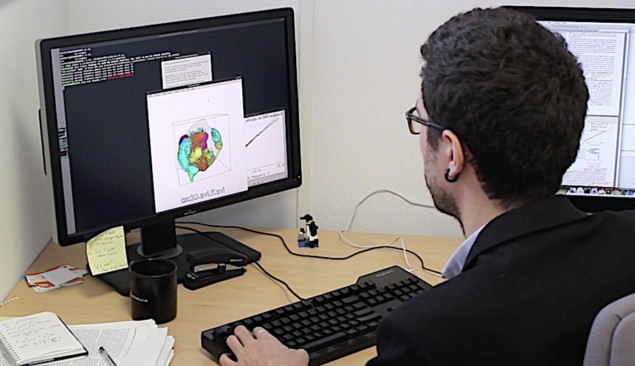
The ever-changing nature of tumours is one of the biggest challenges in treating cancer. If doctors could predict how a tumour will evolve, however, they could alter the treatment before the tumour has a chance to adapt and develop resistance, thereby increasing the patient’s chances of survival.
With this aim, a research team led by scientists at The Institute of Cancer Research (ICR) and the University of Edinburgh has used artificial intelligence to predict how cancers will progress and evolve – enabling doctors to personalize treatment at an earlier stage than is currently possible. They developed a technique called REVOLVER (repeated evolution of cancer), which picks out patterns in DNA mutation within cancers and uses this information to forecast future genetic changes (Nature Methods 15 707).
“We’ve developed a powerful artificial intelligence tool that can make predictions about the future steps in the evolution of tumours based on certain patterns of mutation that have so far remained hidden within complex data sets,” explains study leader Andrea Sottoriva from the ICR. “With this tool, we hope to remove one of cancer’s trump cards – the fact that it evolves unpredictably, without us knowing what is going to happen next.”
The researchers also found links between certain sequences of repeated tumour mutations and survival outcome. For example, breast tumours with a sequence of errors in the genetic material that codes for the tumour-suppressing protein p53, followed by mutations in chromosome 8, survived less time than those with other similar trajectories of genetic changes. This suggests that repeating patterns of DNA mutations could be used as an indicator of prognosis, helping to shape future treatment.
Finding patterns
Sottoriva and colleagues developed a machine learning technique that transfers knowledge about tumours across similar patients. The method identifies patterns in the order in which genetic mutations occur that are repeated both within and between patients’ tumours, applying one tumour’s pattern of mutations to predict another’s.
They examined datasets from lung, breast, renal and colorectal cancer (768 samples from 178 patients), and analysed each cancer type to detect and compare genomic changes in each tumour. By identifying repeating patterns and combining this with current knowledge of cancer biology and evolution, the scientists could predict the future trajectory of tumour development.
If tumours with certain patterns are found to develop resistance to a particular treatment, this technique could be used to predict whether patients will develop resistance in the future.
“This study shows how collaboration across disciplines adds value to research. By solving a statistical machine learning problem, we were able to shed light on cancer evolution,” says joint study leader Guido Sanguinetti from the University of Edinburgh’s School of Informatics. “It is an example of how the power of artificial intelligence to detect complex patterns in data can be harnessed to further our scientific understanding to improve human health.”


